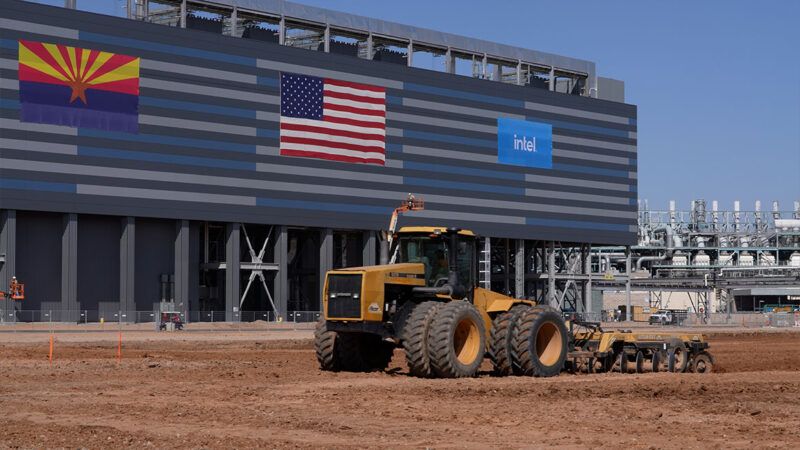Subsidies Won't Stop Stagnation
Joe Biden is making an $80 billion bet that's doomed to fail.

President Joe Biden is making a "big bet on place-based industrial policy," writes Brookings Institution senior fellow Mark Muro. Muro and his colleagues argue that the initiative aims to address the fact that "many of the nation's towns and regions struggle under the weight of economic stagnation and social decline."
The size of the bet is around $80 billion in various industrial subsidies. It is unlikely to pay off as advertised.
These direct subsidies contrast with earlier federal place-based economic development programs, which chiefly used tax credits to encourage investment in poor urban neighborhoods and rural regions. Most research on those programs—which include New Markets Tax Credits (created by President Bill Clinton), Empowerment Zones (George W. Bush), and Opportunity Zones (Donald Trump)—indicates that they have had a negligible impact.
In a 2019 Regional Science and Urban Economics study, for example, University of California, Irvine economists David Neumark and Timothy Young found that so-called enterprise zones "have for the most part been ineffective at reducing urban poverty or improving labor market outcomes in the United States." That conclusion, they said, jibed with "the more widely prevailing view."
The conclusions of a 2023 working paper by University of Iowa finance professor Jiajie Xu were even less promising. Xu found that the Opportunity Zone program actually "led to a decrease in new business formation" and "negatively affected local employment" while having "little impact on attracting population inflows or reducing income inequality." Why? Likely because "the policy drove more private investments to existing firms, deterring potential entrepreneurs from entering and competing with the better-financed incumbents."
Ineffective as they were, the earlier place-based programs were at least directly aimed at locations with few jobs and high levels of poverty. The median annual household income for Opportunity Zones was around $33,000 initially. The subsidies that Biden has championed are less carefully targeted.
"Every American willing to work hard" should be able "to raise their kids on a good paycheck and keep their roots where they grew up," Biden declared in June. "That's Bidenomics." As an example, he cited new semiconductor fabs where workers without college degrees could make six figures.
But those fabs are not being built in the poorest parts of America. Nearly half of the $80 billion in place-based funding is targeted at semiconductor plants as authorized by the CHIPS and Science Act. Many of the companies that will receive the money announced the construction of new plants months before Biden signed that law in August 2022, and they are locating their facilities in places that make sense for their businesses.
In September 2021, for example, Intel said it was building two new fabs in Chandler, Arizona. The following January, the company unveiled plans for another two fabs in New Albany, Ohio. The median household income is $91,000 in Chandler and $206,000 in New Albany. The median household income in the U.S. stands just shy of $71,000, while the poverty threshold is just under $28,000 for a family of four.
Some new fabs are being built in towns with median household incomes below the national average. But the poorest of these is Sherman, Texas, future home of a new Texas Instruments fab, where the median household income is $54,000.
Biden's place-based programs, in short, are not really designed for helping Americans "keep their roots" in places that still "struggle under the weight of economic stagnation and social decline."
Show Comments (34)